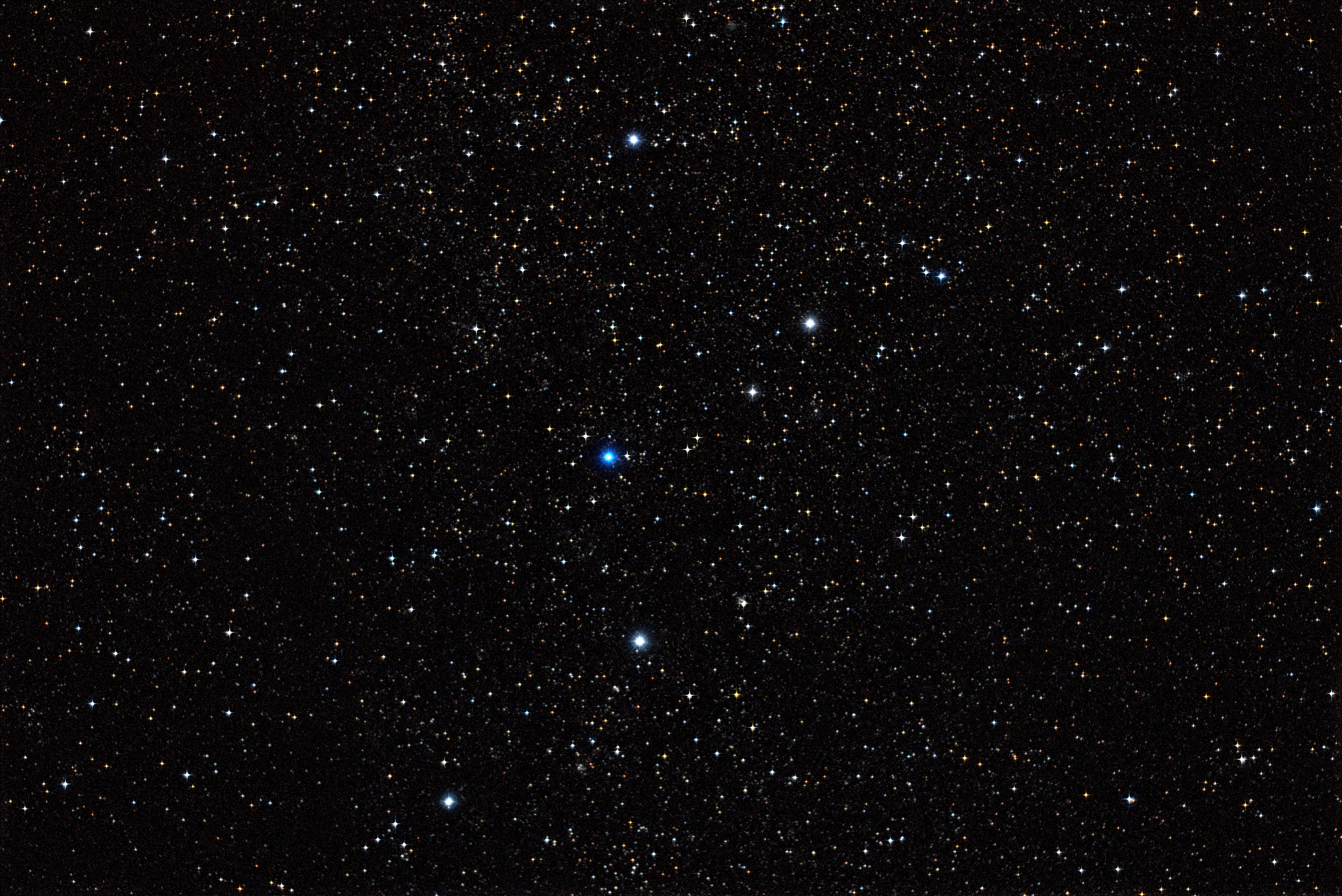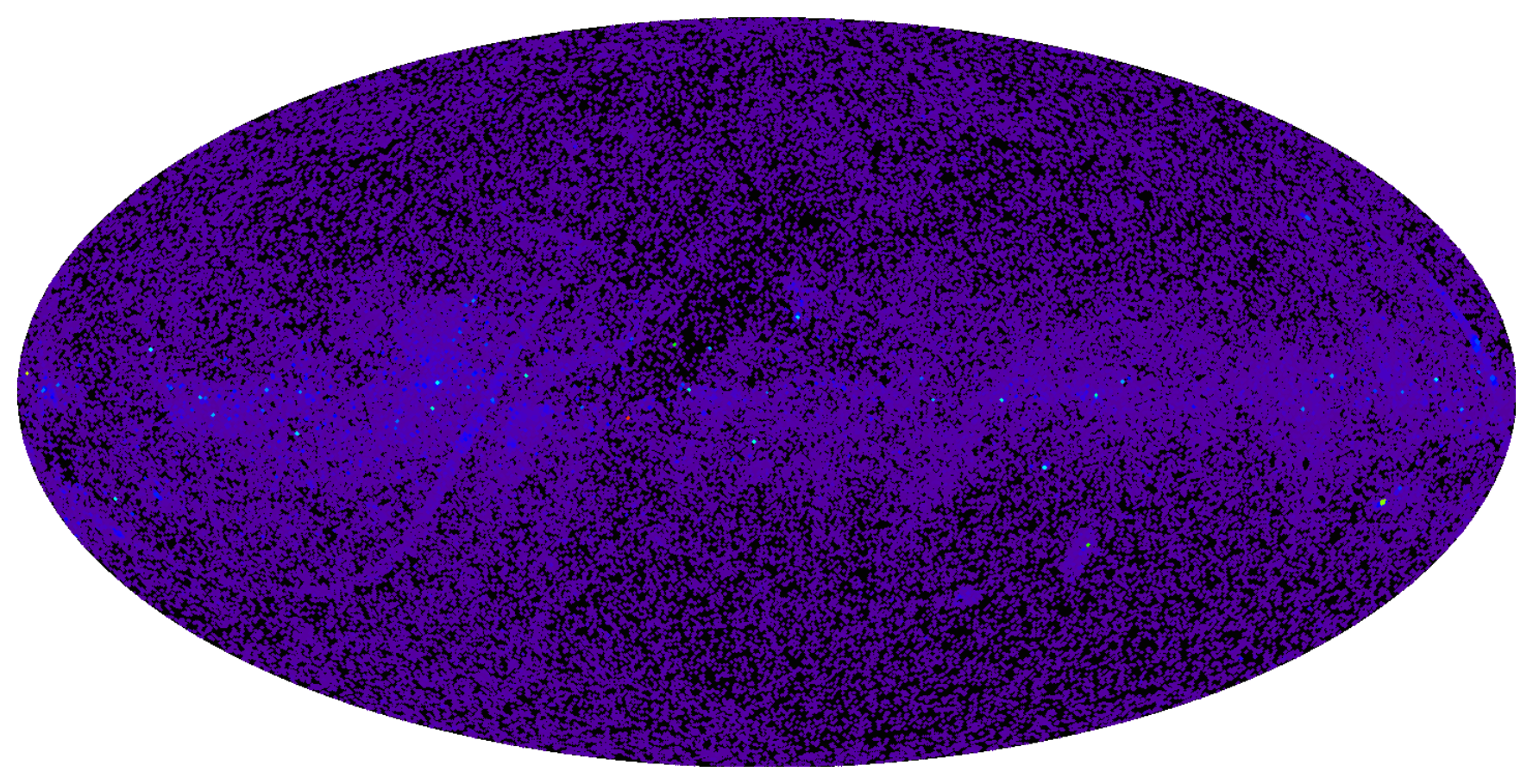|
Mu Cassiopeiae
Mu Cassiopeiae, Latinized from μ Cassiopeiae, is a binary star system in the constellation Cassiopeia. This system shares the name Marfak with Theta Cassiopeiae, and the name was from Al Marfik or Al Mirfaq (المرفق), meaning "the elbow". It is dimly visible to the naked eye as a point of light with an apparent visual magnitude of 5.16. The system is located at a distance of 25 light-years from the Sun based on parallax, and is moving closer with a high radial velocity of −97 km/s. This star will move into the constellation Perseus around 5200 AD. Mu Cassiopeiae is given as a standard star for the spectral class G5Vb, although it is frequently described as a subdwarf, meaning it has a luminosity below that expected for a G5 main sequence star. The metallicity, or abundance of heavy elements, is about one-sixth that in the Sun. It is slightly smaller than the Sun with less mass and a lower luminosity. It is among the oldest known stars, with an age of ... [...More Info...] [...Related Items...] OR: [Wikipedia] [Google] [Baidu] |
Cassiopeia (constellation)
Cassiopeia () is a constellation and Asterism (astronomy), asterism in the northern sky named after the vain queen Cassiopeia (mother of Andromeda), Cassiopeia, mother of Andromeda (mythology), Andromeda, in Greek mythology, who boasted about her unrivaled beauty. Cassiopeia was one of the 48 constellations listed by the 2nd-century Greek astronomer Ptolemy, and it remains one of the 88 modern constellations today. It is easily recognizable due to its distinctive 'W' shape, formed by five bright stars. Cassiopeia is located in the northern sky and from latitudes above 34th parallel north, 34°N it is visible year-round. In the (sub)tropics it can be seen at its clearest from September to early November, and at low southern, tropical, latitudes of less than 25th parallel south, 25°S it can be seen, seasonally, low in the North. At magnitude 2.2, Alpha Cassiopeiae, or Schedar, is the brightest star in Cassiopeia. The constellation hosts some of the most luminous stars known, inclu ... [...More Info...] [...Related Items...] OR: [Wikipedia] [Google] [Baidu] |
Washington Double Star Catalog
The Washington Double Star Catalog, or WDS, is a catalog of double stars, maintained at the United States Naval Observatory. The catalog contains positions, magnitudes, proper motions and spectral types and has entries for (as of January 2024) 157,012 pairs of double stars. The catalog also includes multiple stars. In general, a multiple star with ''n'' components will be represented by entries in the catalog for ''n''−1 pairs of stars. History The database used to construct the WDS originated at Lick Observatory, where it was used to construct the Index Catalog of Visual Double Stars, published in 1963. In 1965, under the initiative of Charles Worley, it was transferred to the Naval Observatory. The catalog has since been augmented by many measurements, mainly from the Hipparcos and Tycho catalogues and results from speckle interferometry, as well as other sources. A unique 1–3 letter discovery code is used to identify the observer who reported the information. For example ... [...More Info...] [...Related Items...] OR: [Wikipedia] [Google] [Baidu] |
M-type Main-sequence Stars
Type M or M type may refer to: Science and technology * Type M, a xD-Picture Card * Type M, a name for the 15 amp BS 546 electrical plug * Vaio Type M, a kind of Vaio computer from Sony * M-type asteroid * m-type filter, an electronic filter * M-type star * M-types, an implementation of inductive type In type theory, a system has inductive types if it has facilities for creating a new type from constants and functions that create terms of that type. The feature serves a role similar to data structures in a programming language and allows a ty ... Other uses * Audi Type M, a 1920s car * Beretta 92FS Compact Type M, a pistol * MG M-type, a sports car See also * M class (other) * Class M (other) {{disambiguation ... [...More Info...] [...Related Items...] OR: [Wikipedia] [Google] [Baidu] |
G-type Subdwarfs
G-Type G-Type is a fictional character from Marvel Comics. G-Type is one of the Shi'ar's Imperial Guard, and is also an alien. He was engineered in the stellar nurseries of Hodinn and was composed of a living solar plasma, with a constant surface temperature of 6000 kelvins (about 10,000 degrees Fahrenheit or 5,700 degrees Celsius). Because of this G-Type wears specially-constructed armor which assists him in retaining a humanoid form and contains the heat that he generates. G-Type is also a telepath, although the nature and extent of his telepathy are unknown. Similar to the other Imperial Guard members, he is based on DC Comics' Legion of Super-Heroes, sharing traits with Wildfire and Saturn Girl. His mind, like the minds of many other Shi'ar soldiers, was overtaken by the telepath Cassandra Nova. He was defeated by Cyclops and Xorn, whom he was planning to fire into the Earth's atmosphere. Gaea Gaea is a fictional character appearing in American comic books published b ... [...More Info...] [...Related Items...] OR: [Wikipedia] [Google] [Baidu] |
G-type Main-sequence Stars
A G-type main-sequence star (spectral type: G-V), also often, and imprecisely, called a yellow dwarf, or G star, is a main sequence, main-sequence star (luminosity class V) of stellar classification, spectral type G. Such a star has about 0.9 to 1.1 solar masses and an effective temperature between about . Like other main-sequence stars, a G-type main-sequence star converts the Chemical element, element hydrogen to helium in its core by means of nuclear fusion. The Sun, the star in the center of the Solar System to which the Earth is gravitationally bound, is an example of a G-type main-sequence star (G2V type). Each second, the Sun fuses approximately 600 million tons of hydrogen into helium in a process known as the proton–proton chain (4 hydrogens form 1 helium), Mass–energy equivalence, converting about 4 million tons of matter to energy. Besides the Sun, other well-known examples of G-type main-sequence stars include Alpha Centauri, Tau Ceti, and 51 Pegasi. Description Th ... [...More Info...] [...Related Items...] OR: [Wikipedia] [Google] [Baidu] |
Cambridge University Press
Cambridge University Press was the university press of the University of Cambridge. Granted a letters patent by King Henry VIII in 1534, it was the oldest university press in the world. Cambridge University Press merged with Cambridge Assessment to form Cambridge University Press and Assessment under Queen Elizabeth II's approval in August 2021. With a global sales presence, publishing hubs, and offices in more than 40 countries, it published over 50,000 titles by authors from over 100 countries. Its publications include more than 420 academic journals, monographs, reference works, school and university textbooks, and English language teaching and learning publications. It also published Bibles, runs a bookshop in Cambridge, sells through Amazon, and has a conference venues business in Cambridge at the Pitt Building and the Sir Geoffrey Cass Sports and Social Centre. It also served as the King's Printer. Cambridge University Press, as part of the University of Cambridge, was a ... [...More Info...] [...Related Items...] OR: [Wikipedia] [Google] [Baidu] |
List Of Nearest Stars By Spectral Type
Below there are lists the nearest stars separated by spectral type. The scope of the list is still restricted to the main sequence spectral types: M-type star, M, K-type star, K, F-type star, F, G-type star, G, A-type star, A, B-type star, B and O-type star, O. It may be later expanded to other types, such as S-type star, S, White dwarf, D or Carbon star, C. List of nearest M-type stars This is a list of M-type stars within 13 light years. List of nearest K-type stars This is a list of K-type stars within 30 light years. List of nearest G-type stars This is a list of G type stars, G-type stars within 40 light years. List of nearest F-type stars This is a list of F-type stars within 50 light years. List of nearest A-type stars This is a list of A type stars, A-type stars within 70 light years. } , 2.067 , , 1.444 , Part of a binary star system , - , colspan="2" , Iota Centauri , , A2V , 1.90 = 1.9\ R_\odot. , 2.03 ± 0.03 , , 1.47 , , - , colspan="2" , ... [...More Info...] [...Related Items...] OR: [Wikipedia] [Google] [Baidu] |
Red Dwarf
A red dwarf is the smallest kind of star on the main sequence. Red dwarfs are by far the most common type of fusing star in the Milky Way, at least in the neighborhood of the Sun. However, due to their low luminosity, individual red dwarfs are not easily observed. Not one star that fits the stricter definitions of a red dwarf is visible to the naked eye. Proxima Centauri, the star nearest to the Sun, is a red dwarf, as are fifty of the sixty nearest stars. According to some estimates, red dwarfs make up three-quarters of the fusing stars in the Milky Way. The coolest red dwarfs near the Sun have a surface temperature of about and the smallest have radii about 9% that of the Sun, with masses about 7.5% that of the Sun. These red dwarfs have spectral types of L0 to L2. There is some overlap with the properties of brown dwarfs, since the most massive brown dwarfs at lower metallicity can be as hot as and have late M spectral types. Definitions and usage of the term "red d ... [...More Info...] [...Related Items...] OR: [Wikipedia] [Google] [Baidu] |
Kitt Peak National Observatory
The Kitt Peak National Observatory (KPNO) is a United States astronomy, astronomical observatory located on Kitt Peak of the Quinlan Mountains in the Arizona-Sonoran Desert on the Tohono Oʼodham Nation, west-southwest of Tucson, Arizona. With more than twenty optical and two Radio telescope, radio telescopes, it is one of the largest gatherings of astronomical instruments in the Earth's northern hemisphere. Kitt Peak National Observatory was founded in 1958. It is home to what was the largest solar telescope in the world, and many large astronomical telescopes of the late 20th century in the United States. The observatory was administered by the National Optical Astronomy Observatory (NOAO) from the early 1980s until 2019, after which it was overseen by NOIRLab. In June 2022, the Contreras Fire led to the evacuation of Kitt Peak. The fire reached the summit at 2 a.m. on Friday, June 17. Four non-scientific buildings, including a dormitory, were lost in the fire. 15 months la ... [...More Info...] [...Related Items...] OR: [Wikipedia] [Google] [Baidu] |
Astronomical Unit
The astronomical unit (symbol: au or AU) is a unit of length defined to be exactly equal to . Historically, the astronomical unit was conceived as the average Earth-Sun distance (the average of Earth's aphelion and perihelion), before its modern redefinition in 2012. The astronomical unit is used primarily for measuring distances within the Solar System or around other stars. It is also a fundamental component in the definition of another unit of astronomical length, the parsec. One au is approximately equivalent to 499 light-seconds. History of symbol usage A variety of unit symbols and abbreviations have been in use for the astronomical unit. In a 1976 resolution, the International Astronomical Union (IAU) had used the symbol ''A'' to denote a length equal to the astronomical unit. In the astronomical literature, the symbol AU is common. In 2006, the International Bureau of Weights and Measures (BIPM) had recommended ua as the symbol for the unit, from the French ... [...More Info...] [...Related Items...] OR: [Wikipedia] [Google] [Baidu] |
Semimajor Axis
In geometry, the major axis of an ellipse is its longest diameter: a line segment that runs through the center and both foci, with ends at the two most widely separated points of the perimeter. The semi-major axis (major semiaxis) is the longest semidiameter or one half of the major axis, and thus runs from the centre, through a focus, and to the perimeter. The semi-minor axis (minor semiaxis) of an ellipse or hyperbola is a line segment that is at right angles with the semi-major axis and has one end at the center of the conic section. For the special case of a circle, the lengths of the semi-axes are both equal to the radius of the circle. The length of the semi-major axis of an ellipse is related to the semi-minor axis's length through the eccentricity and the semi-latus rectum \ell, as follows: The semi-major axis of a hyperbola is, depending on the convention, plus or minus one half of the distance between the two branches. Thus it is the distance from the c ... [...More Info...] [...Related Items...] OR: [Wikipedia] [Google] [Baidu] |
Allegheny Observatory
The Allegheny Observatory is an American astronomical research institution, a part of the Department of Physics and Astronomy at the University of Pittsburgh. The facility is listed on the National Register of Historic Places (ref. # 79002157, added June 22, 1979) and is designated as a Pennsylvania state and Pittsburgh History and Landmarks Foundation historic landmark. History The observatory was founded on February 15, 1859, in the city of Allegheny, Pennsylvania (incorporated into the City of Pittsburgh in 1907) by a group of wealthy industrialists calling themselves the Allegheny Telescope Association. The observatory's initial purpose was for general public education as opposed to research, but by 1867 the revenues derived from this had receded. The facility was then donated to the Western University of Pennsylvania, today known as the University of Pittsburgh. The University hired Samuel Pierpont Langley to be the first director. One of the research programs init ... [...More Info...] [...Related Items...] OR: [Wikipedia] [Google] [Baidu] |








